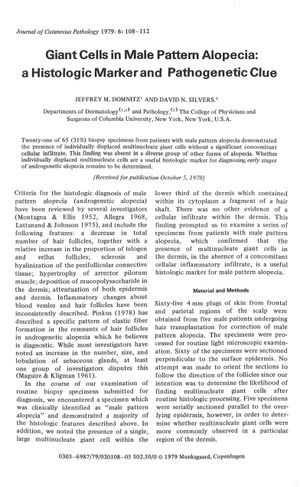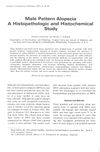Giant Cells in Male Pattern Alopecia: a Histologic Marker and Pathogenetic Clue
April 1979
in “Journal of Cutaneous Pathology”

TLDR Giant cells found in some male pattern baldness cases may help diagnose it and suggest hair is mistakenly seen as foreign by the body.
In 1979, a study involving 65 biopsy specimens from patients with male pattern alopecia revealed that 21 specimens (32%) had multinucleate giant cells in the dermis, a feature not found in other types of alopecia. These giant cells were often near hair shaft fragments and could serve as a diagnostic marker for male pattern alopecia, especially in advanced stages. Additionally, the study compared these findings with 116 scalp biopsies from various alopecia types and confirmed the uniqueness of the giant cells to male pattern alopecia. The study suggested that the shrinking of hair follicles and the subsequent structural loss might cause hair to be perceived as a foreign body, leading to the giant cell reaction, although the exact pathogenesis of male pattern alopecia was still not fully understood.
View this study on onlinelibrary.wiley.com →
Cited in this study

research Male Pattern Alopecia A Histopathologic and Histochemical Study
Male pattern baldness involves smaller hair follicles, larger oil glands, and other tissue changes, but not major blood supply issues.